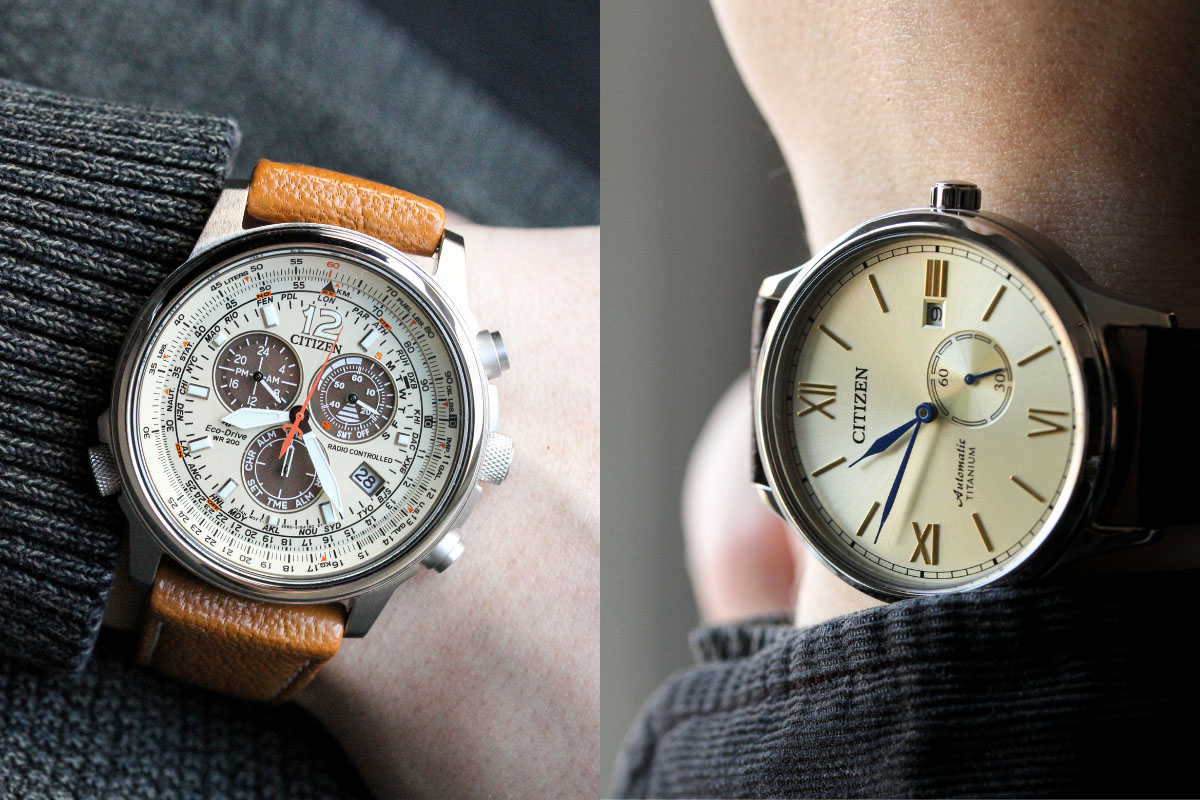-
Watches
-
Sport watches
-
Smart watches
-
By price
-
By price
-
Jewelry
-
By material
-
By material
-
Rings
-
By price
-
By price
-
Other
- Most popular categories
- Wallets
- Watch straps
- Watch boxes
- Jewelry boxes
- All other products
- OUTLET
- Customer account
We deliver to all EU countries!

On which hand should I wear my watch?
The question of which hand watches should be worn on is familiar to all watch users. It’s an everlasting bone of contention amongst watch enthusiasts. Despite its simplicity, the question manages to ignite the passion of each side’s supporters time after time. Although it’s every watch user’s personal choice, in this article we offer some practical arguments in favour of the widely considered “correct” arm. These practical examples from everyday life are more concrete and understandable than pleading to some vague “etiquette” and make it easier to understand the reasons behind the dominant opinion. We’ll be presenting our points from a right-hander’s point-of-view so if you’re left-handed, just flip the sides the other way around in order to apply it to your own situation.
Have you ever questioned which hand should a watch be worn on? It’s an everlasting debate amongst watch enthusiasts. Despite it being a fairly simple question, it somehow manages to cause some intense discussions between those who think a watch should be worn on your left wrist and those who think it's vice versa. Although it’s every watch user’s personal choice, in this article we offer some practical arguments in the favour of what many argue is the “correct” arm to wear your watch on. These practical examples from everyday life are more concrete and understandable than pleading to some vague “etiquette” and make it easier to understand the reasons behind this dominant opinion. We’ll be presenting our points from a right-hander’s point of view so if you’re left-handed, just flip the sides the other way around in order to apply it to your situation.
3 reasons why you should wear your watch on your left hand
Most people wear their watches on the wrist of their non-dominant hand. Right-handed people are the statistical majority, and the majority’s ways often develop into norms. Therefore, wearing your watch on the left wrist is also the prevalent opinion in the watch community. The general sentiment is rarely formed without any reasoning, and there are several practical arguments from everyday life to reinforce the argument that wearing it on your left is the way to go.
1. You use your dominant hand more
Basically all of us are more active with our dominant hands. When we trip and fall, as a reflex our dominant hand is always first to brace the impact, and our “weaker” hand hurries to help if there’s time. The first argument in favour of non-dominant hands is precisely based on the activity of our hands. Your watch is more exposed to various impacts and scratches in your dominant hand. Also, it may get in the way or cause discomfort while doing various tasks such as writing.
2. Checking and setting the time is way easier
In most watches, the crown – which is used for setting and changing the time – is located on the right-hand side. This makes it easier for right-handers to set the time when the watch is being used in the left hand. If being worn in the right hand, this advantage is effectively nullified, and the wearer is probably forced to take the watch off to set the time. Recently some watch manufacturers have begun to make watches specially designed for lefties, which feature the crown on the left-hand side. Checking the time is also more convenient when the watch is being worn in the non-dominant hand because our brains are inherently programmed to first put our dominant hand to work, so you can twist your arm and check the time without having to interrupt what you’re doing.
3. It’s safer for the movement of the watch
The movement of the watch is one of the most important parts of the watch as it enables the watch to keep time, but it’s also one of the most vulnerable parts at the same time. If worn on the more dominant hand, your watch is more susceptible to sudden impacts and shocks which could seriously harm the movement. Unlike scratches on the exterior of the watch, you might not even notice the gradual damage you’re doing to your watch’s movement until it starts to break down. Sudden hits aren’t good for any movements, but they’re especially harmful to automatic and mechanical movements, which happen to be the costliest to repair. Ordinary activities such as hammering or playing tennis are just a few examples of shock-delivering tasks, in which the dominant hand plays a bigger role.
In the end, you can notice that there are quite a few arguments to back wearing your watch in your non-dominant hand. Regardless of your handedness using your watch on either one of your hands isn’t wrong by any means, and you probably don’t need to go about changing your old watch-wearing habits in a sudden whim of reform. But for someone that has only recently begun their journey into watches, it’s definitely helpful to know the “general” way of thinking about where to wear your watch, and especially to understand the reasons behind it.
Keywords
